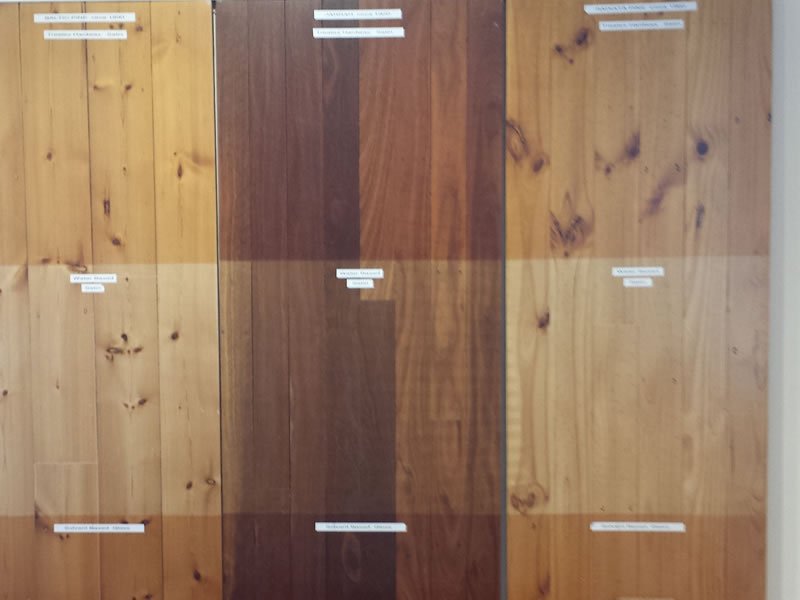As is often the case, this month’s article was inspired by recent events. While we were visiting a family member in Adelaide, she asked us to coat her new timber desk top with a water-based coating that’s low sheen, hard-wearing and wouldn’t cause the pale straw colour of the timber to yellow.
This reminded us of the late seventies/early eighties when pine timber was all the rage and friends of ours – with a penchant for all things Scandinavian – purchased a piece of pine furniture especially for its pale blonde colour, only to be disappointed later when they realised it had yellowed over time despite the fact that they had lovingly coated it with Danish oil to prevent this from happening.
But the clincher for us was an enquiry from a timber advisory centre about a client who was disappointed because their polyurethane coated timber floor had turned an unacceptable shade of yellow.
The problem here is clearly consumer expectation – a common cause of consumer concerns and complaints. Consumers, be they ill-informed or poorly educated about the products available, are prone to unrealistic outcome expectations. The solution to this problem is to educate all stake holders, and a good place to start is to demystify the concept of yellowing.
There are two aspects to the colour changes that occur in timber floors. One is the oxidisation of the timber. This occurs when the pigments, tannins and other resins in timber are exposed to air and UV light. Over time this will cause yellowing in light timbers, while darker timbers usually develop rich brown or pink red tones and uncoated timbers will grey or silver. Oxidisation is a natural process, and the effect is noted in both coated and uncoated timber. The degree to which timber will change colour depends on the extent of its exposure to direct and indirect UV light and will vary from species to species.
While the chemicals in floor finishes are known to influence the oxidisation process in timber, they in their own right change colour over time. Solvent based polyurethanes, tung oil and wax type finishes are more prone to yellowing than their water based counterparts.
Polyurethane coatings are known for their durability, chemical resistance, abrasion resistance and film clarity, however a little information about their chemical make-up can go a long way towards helping us understand why some products yellow and others don’t.
The building blocks for polyurethane are polyols and isocyanates. These chemicals can be:
- Dissolved in solvents in unreacted form as the basis of solvent based floor coatings;
- Dispersed in water in reacted form as the basis of a waterborne floor coating.
There are two types of isocyanate used to form polyurethane:
- Aromatic isocyanates that contain double carbon bonds, which react with ultra violet radiation and cause yellowing to occur, and
- Aliphatic isocyanates which do not contain double carbon bonds and therefore do not react to ultra violet light.
Aliphatic isocyanates are much more expensive than their aromatic counterparts, hence the higher cost of non-yellowing floor finishes.
Like their solvent-based polyurethane counterparts, oil and wax type floor finishes tend to yellow over time, even those that appear totally void of colour, like linseed oil. While imparting a gold or amber hue to the timber, oil and wax finishes – while generally considered less durable, given the need for more frequent refurbishment – are often a viable solution for floors that experience excessive movement or where a more visible grain structure is a desirable aesthetic.
Interested to observe the yellowing of polyurethane for himself, an associate of ours applied a coat of solvent-based polyurethane to a sheet of clear glass. In a relatively short period of time the coating material took on a warm yellow glow. This experiment can also be conducted by partially coating a white painted board. This is a great way to show to consumers the effect of age and UV light on polyurethane coated materials.
There is nothing like a physical representation to illustrate a given range of variables; such as the boards in the above photos. Here a set of display panels each feature a different species of timber. Baltic Pine, Jarrah circa 1920 and Radiata pine, have been divide into three sections, the top section of each panel is coated with Hardwax, the centre panel with a water-based finish and the bottom panel with a solvent-based polyurethane. The purpose of this exercise is to provide the customer with a comparative example of colour and texture variation across the range of coatings offered by this organisation, in particular the non-yellowing effect of water based finish.
Historically, water-based finishes were thought to be less durable than solven-based counterparts, as well as slower curing and more environmentally friendly. But technology changes, and in a relatively small space of time the manufacturers of theses coatings have closed the gap and are now offering products with comparable durability and super-quick drying times. Some of the products currently available are dry enough for use 24 hours after application and all without altering the key characteristics; as well as being environmentally friendly and non-yellowing, which is what made them popular in the first place.










